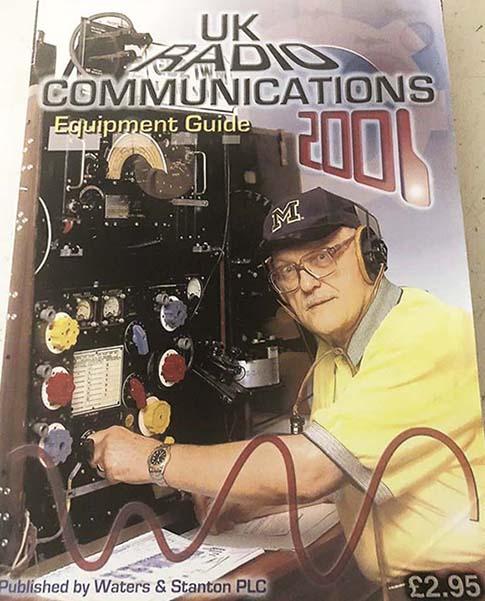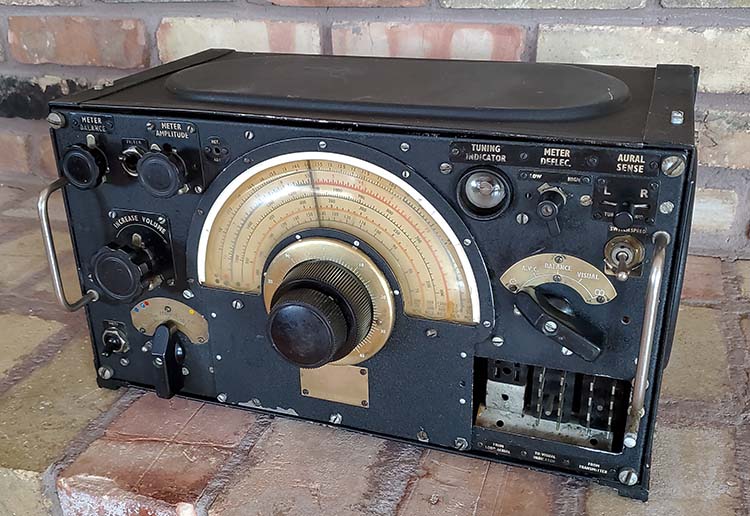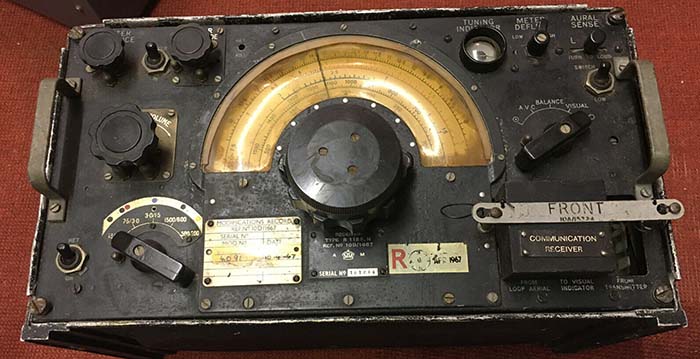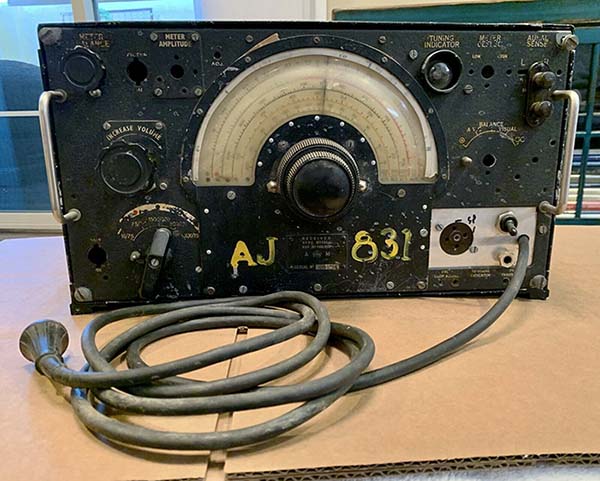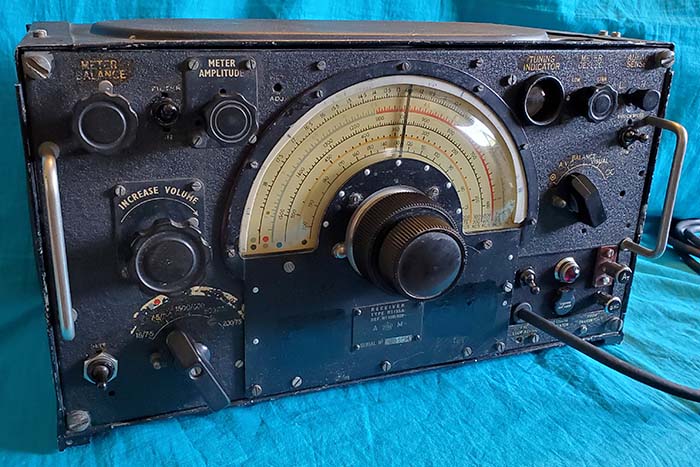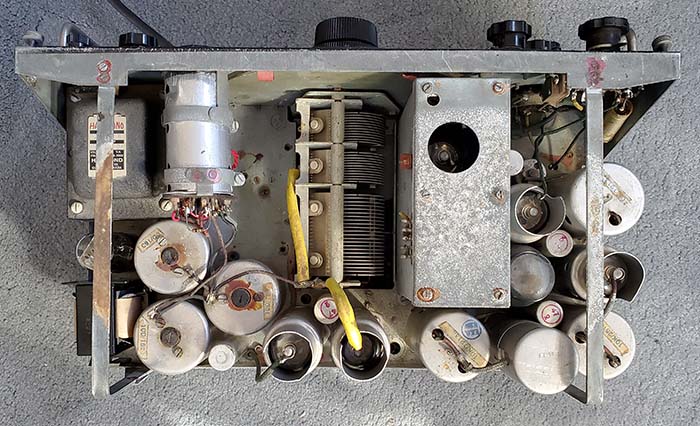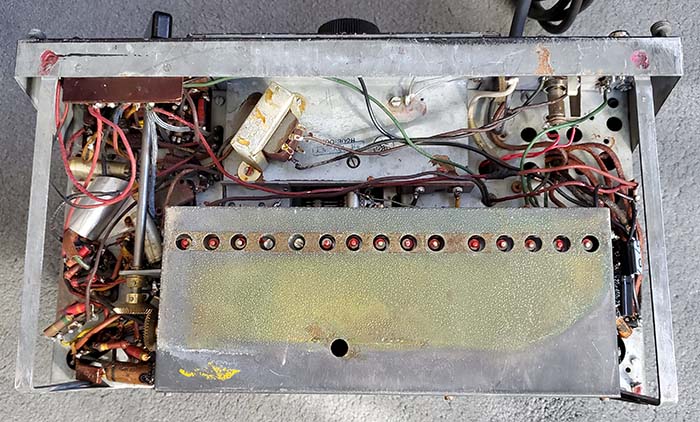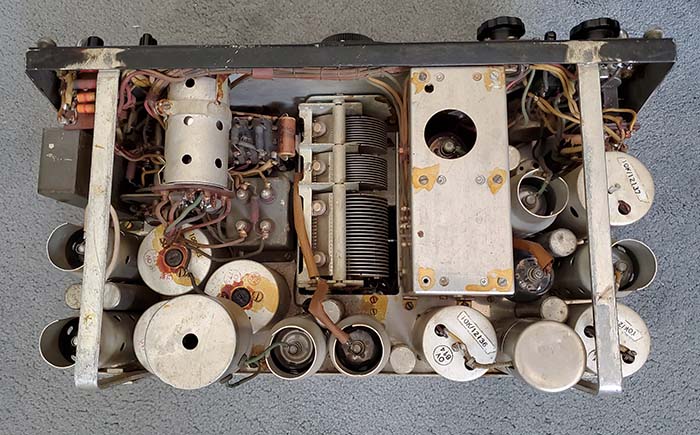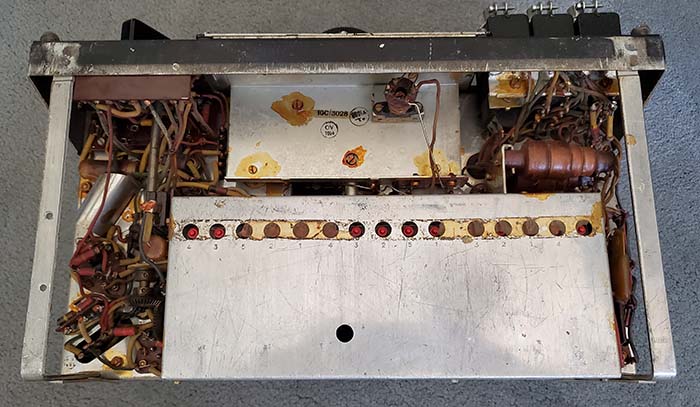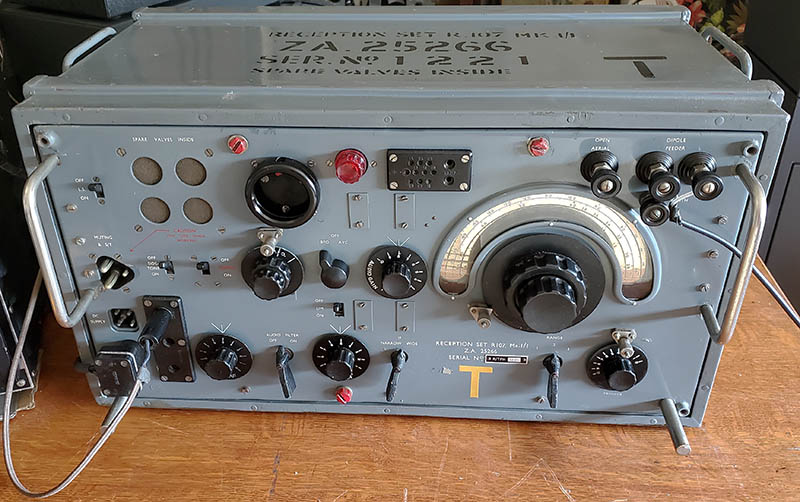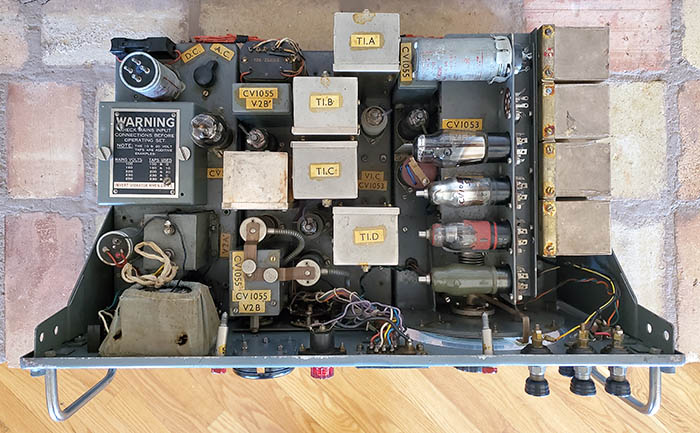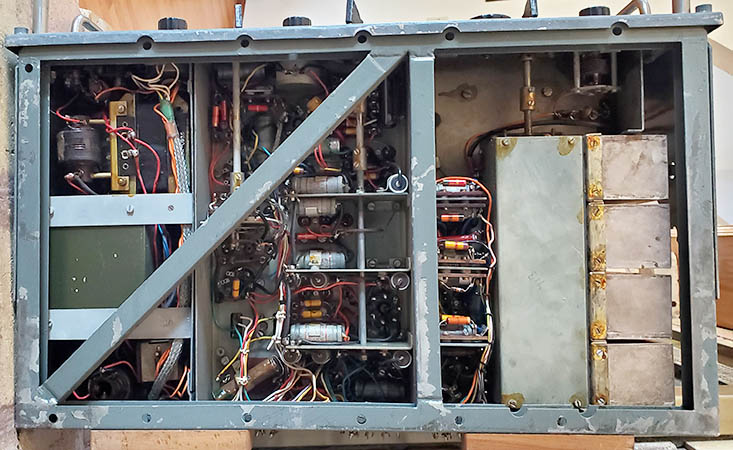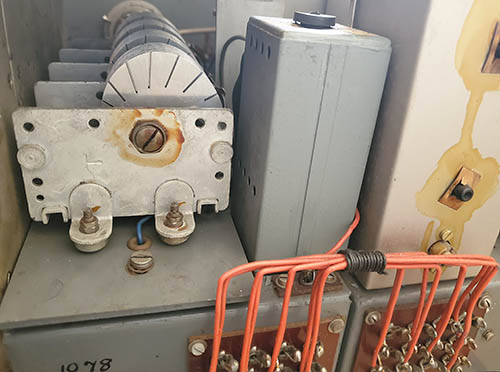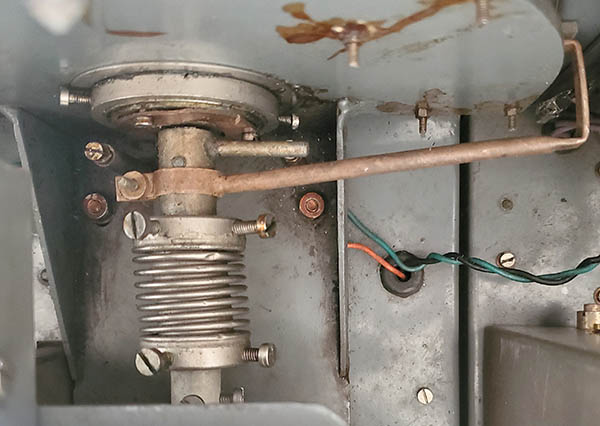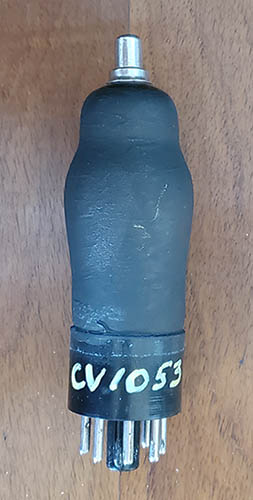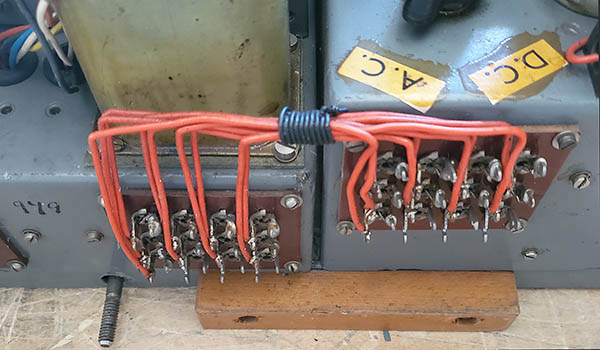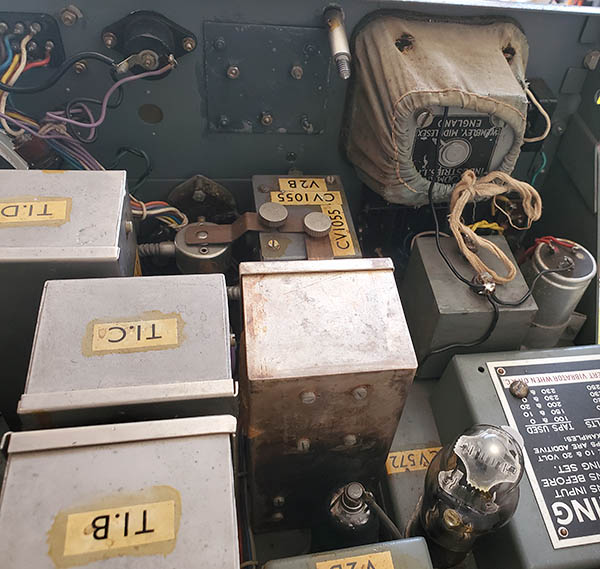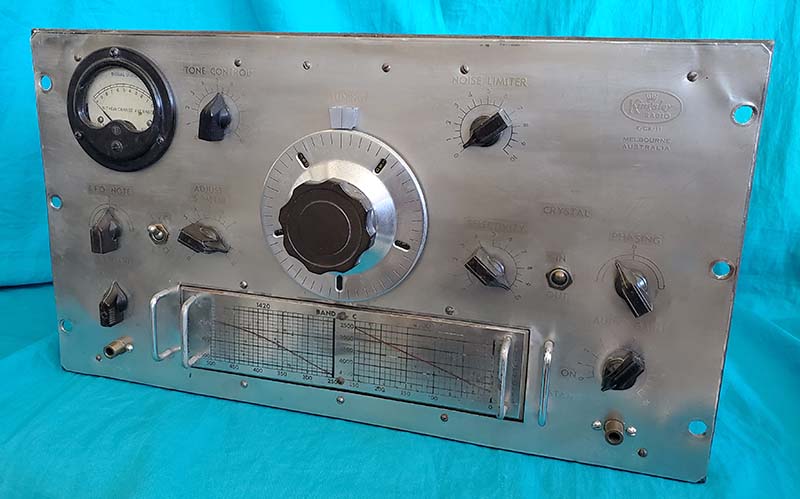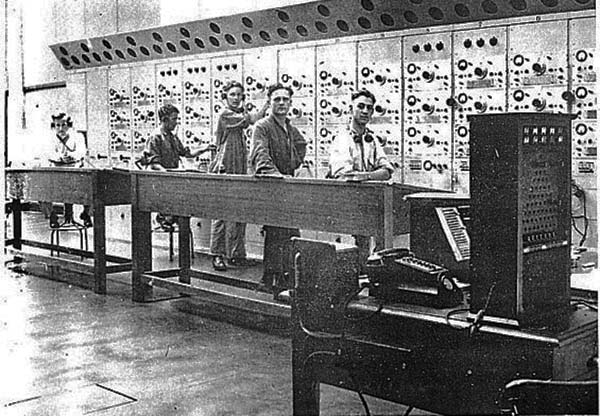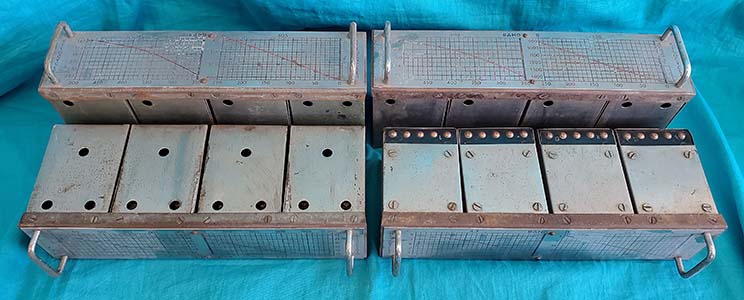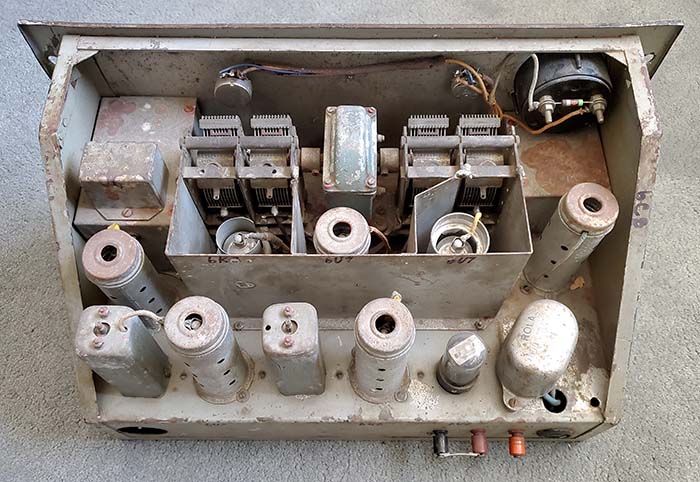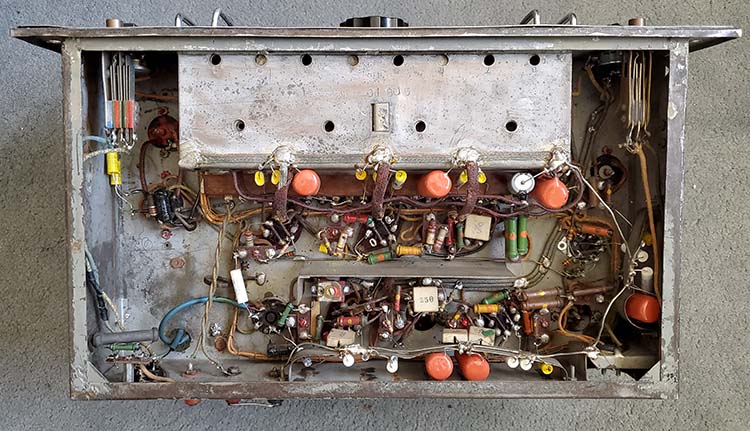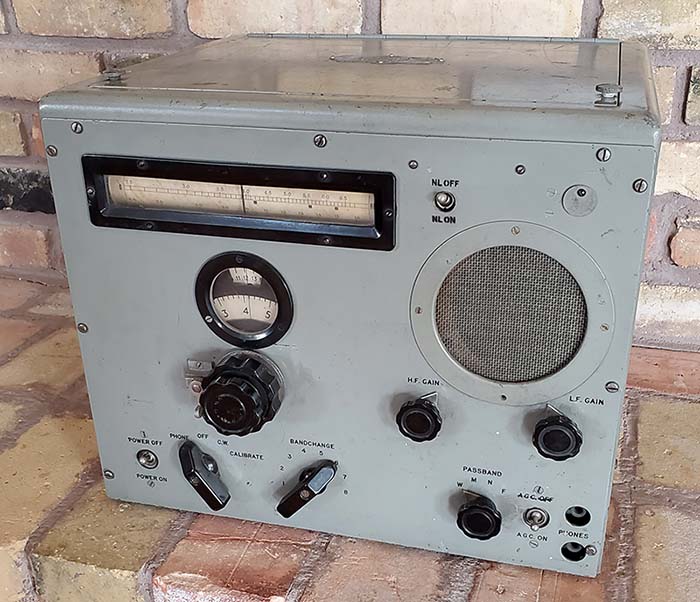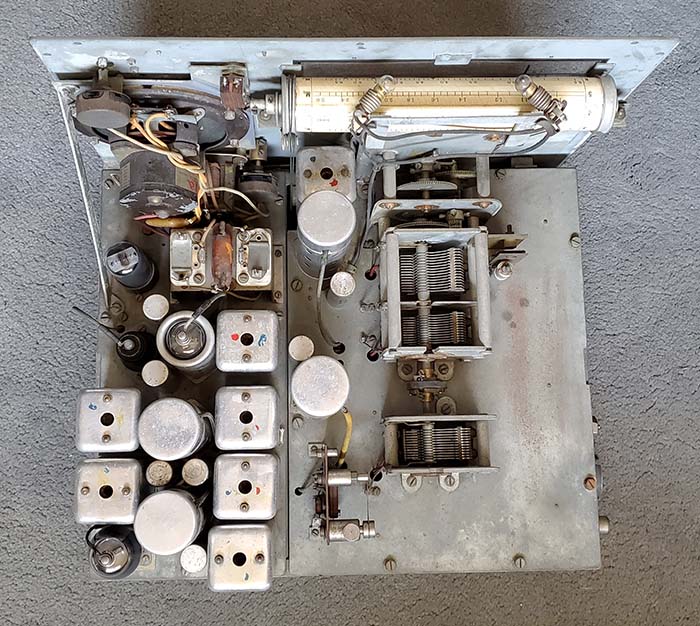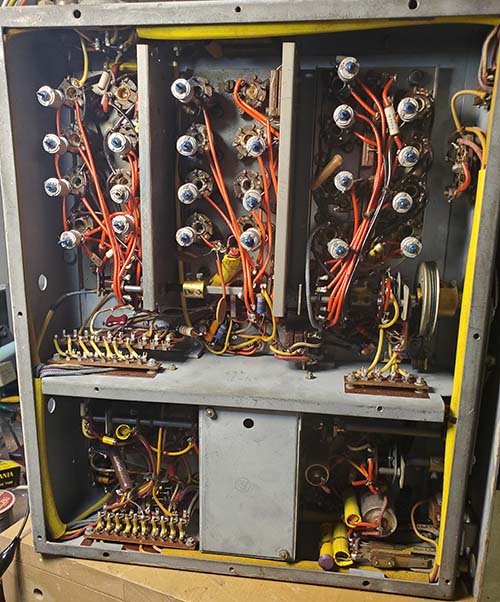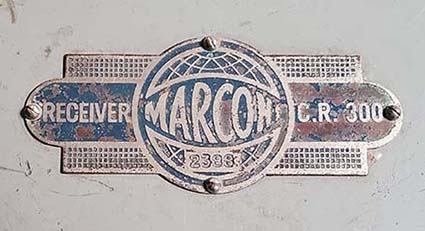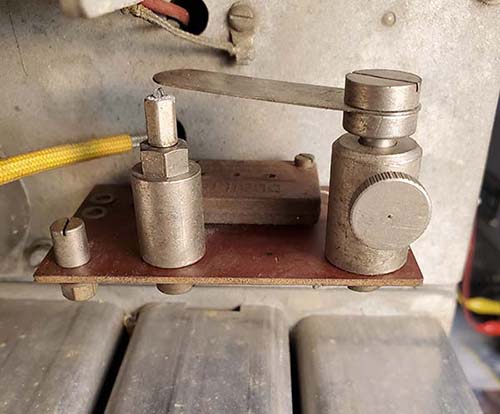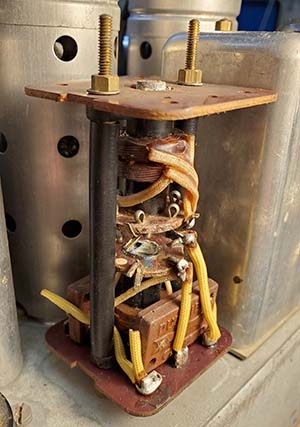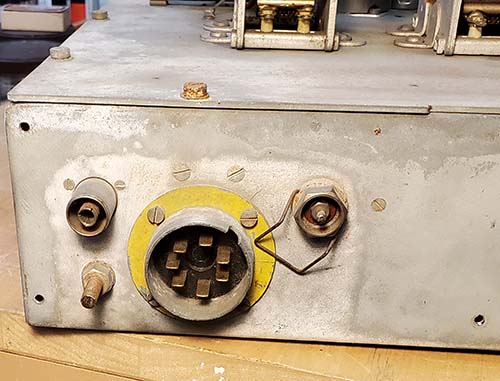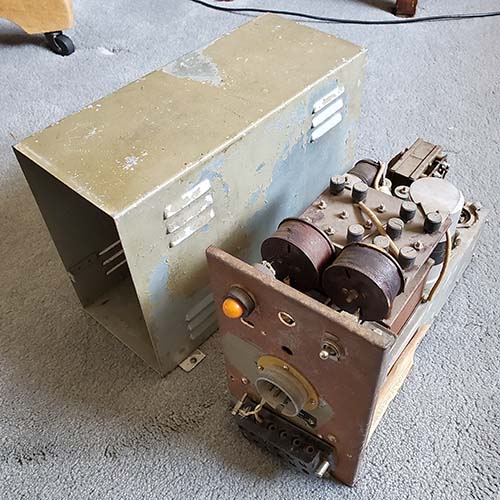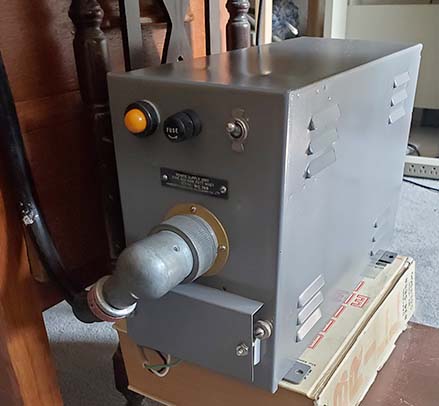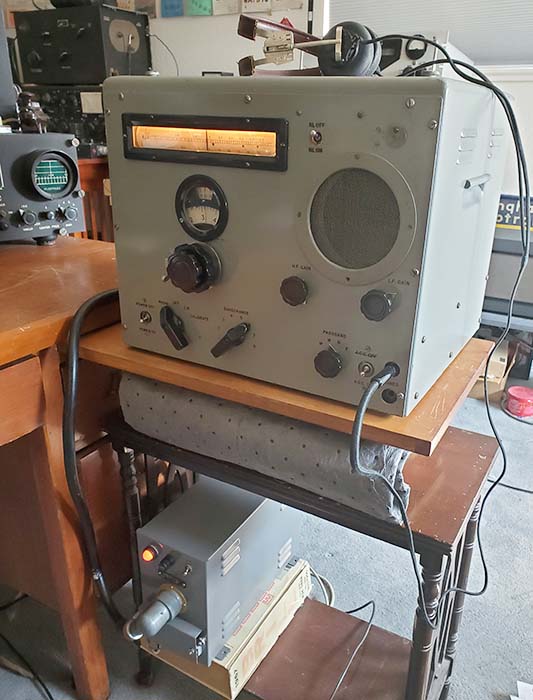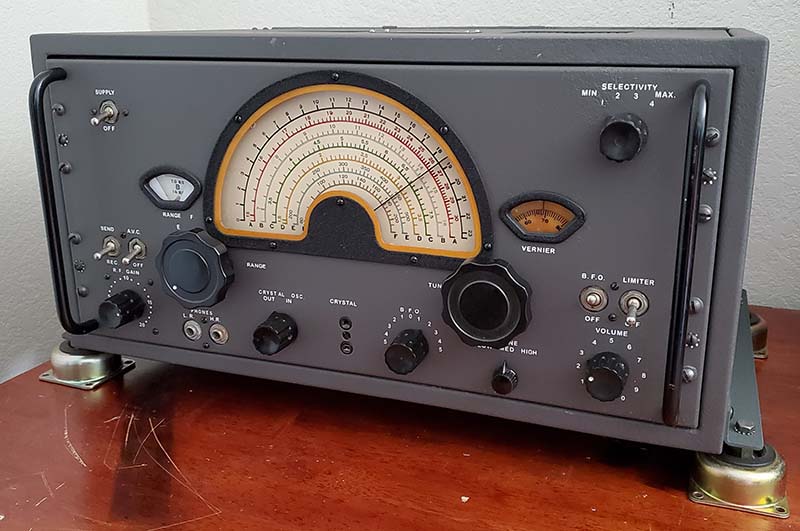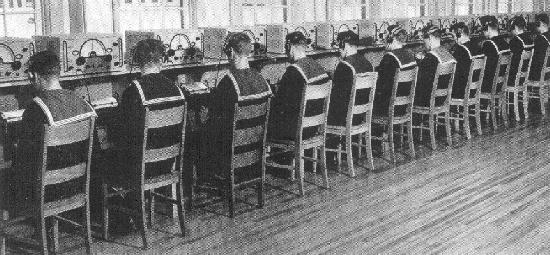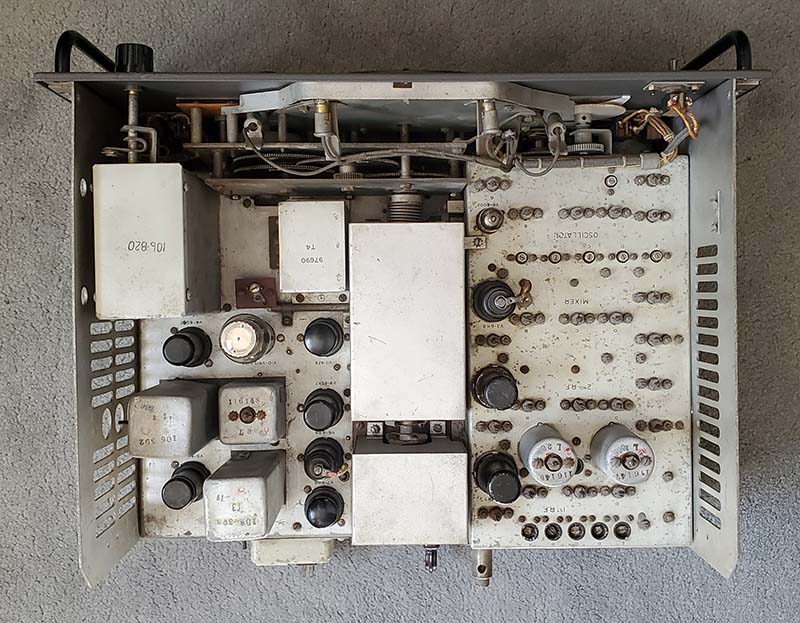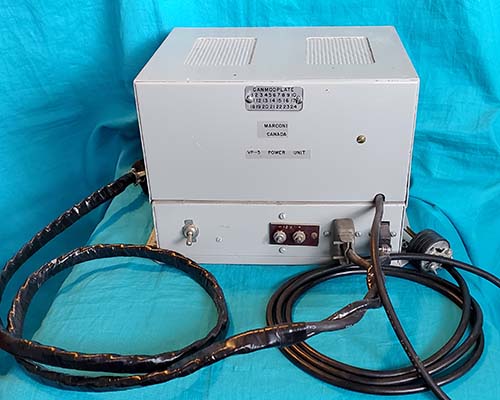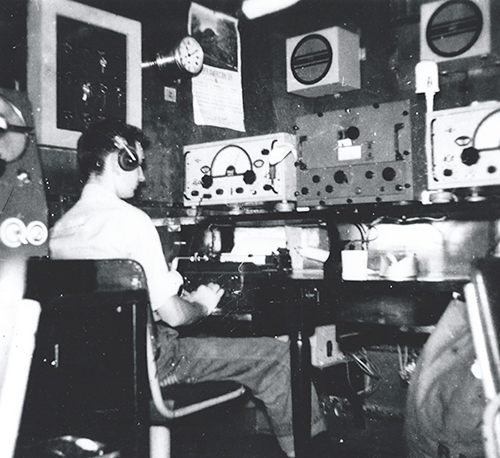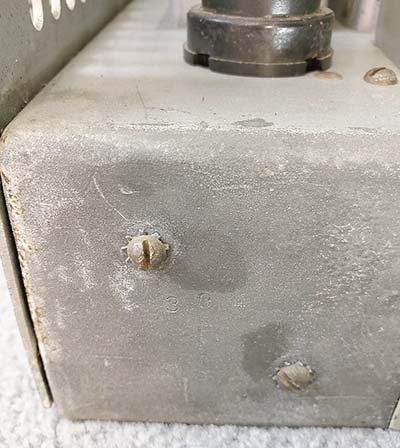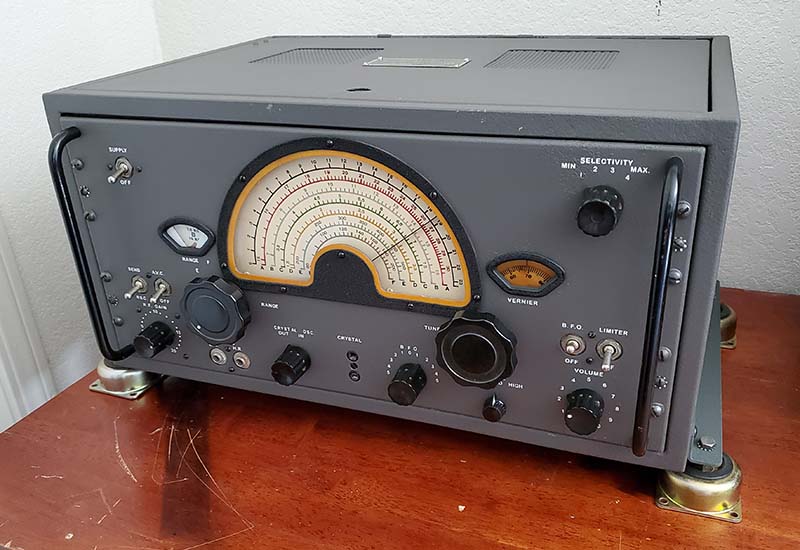|
This happens to me a lot,...after I've gone through a receiver
and I'm actually using it on a regular basis, I begin to notice
little problems or quirks that I either missed or I thought were
minor, so they were ignored. When the receiver actually works
pretty well and it's obvious it's not going to be another "shelf
queen," a return to the workbench is inevitable. The following is
what was found after the "30-day sea trials" and on the
subsequent "Workbench Revisit."
|
Oct. 29, 2020 - Workbench Revisit
- After using the C.R. 300/1 as a station receiver for about one month,
a few minor problems required returning the receiver to the workbench for
further "tuning up." The return work was going to require some
disassembly mostly involving cabinet and
bottom cover removal (and front panel dismount later in the "revisit.")
Installation of Tube Socket
Shroud/Shield for DH63 - The
first problem was mechanical because I had replaced the metal 6Q7 tube
with the proper DH63 glass tube and that now required installing the
correct tube socket shroud and tube shield. These parts had been removed
years ago when the 6Q7 was installed. Installation was just a matter of
tube socket screw removal, installing a correct style shroud and then reinstalling the screws.
LF Gain Pot Problem - The second problem was a noisy AF Gain control (LF Gain) that seemed to
be more intense since installing the DH63 (more info on this tube's
performance, or lack of, in "DH63 Problem" below.) Access to the LF
Gain pot was easy. I removed its back cover and cleaned with a DeOxit
dampened Q-tip. The pot was reassembled and remounted.
Band Switch Problem - Third problem was
that I had to "rock" the band switch on Bands 6 and 7 to get full
sensitivity. I hadn't cleaned the band switch, so that was done using a
small paint brush and DeOxit. When doing the cleaning I discovered that
the RF/ANT section bandswitch mounting screws were extremely loose. Both mounting
screws required considerable tightening to have the switch always
"inline" and to not move around when the bandswitch was operated.
All of the other Bandswitch mounting screws were tight. The RF/ANT
switch movement probably resulted in the misalignment in position 6 and
7 which the "rocking" of the Bandswitch knob would get the
loose switch into the proper position. The IF band
switch and the Passband switch were also cleaned.
Re-Alignment of the RF Tracking
- Since I had
changed the RF amp tube from a KTW61 to the proper ARTH2, I performed a
second complete RF tracking alignment. Since the installation of the
ARTH2 improved the high frequency sensitivity so much I thought that the
tube must have slightly different characteristics and a RF tracking
alignment might show more improvement. Also, the first alignment was
just a "quickie" - kind of a "roughed-in" alignment to make sure
everything worked okay. I had used the slide rule frequency dial
settings for tracking and that dial doesn't have any accuracy at all
(even the manual states that the slide rule frequency dial is just for
"reference.") The manual provides exact frequencies that correlate to
23.00 on the logging dial for the low end and 1.00 on the high end for
each of the eight bands. To
align the tracking accurately one has to use the logging dial since that
is mechanically driven along with the tuning condenser. One has to use a 200pf
dummy antenna load between the receiver and the signal generator on
Bands 1, 2, 3 and 4. On Bands 5, 6, 7 and 8 a 100 ohm CC resistor is
used for the dummy antenna load. The tracking adjustments were off by
quite a bit, probably because of the way I did the initial alignment (a
"quickie" alignment.) After alignment, I've noticed that the
relationship of the logging dial/f versus the slide rule dial indication
is that the upper and lower ends of the slide rule dial are off at the
specified logging dial numbers but the majority of the
slide rule dial indication is relatively accurate.
RF/Ant Coil #8 Problem
- Another problem found while doing the alignment was that the RF/ANT
adjustments wouldn't work on BAND 8. I found that one of the terminals
on coil #8 had three different wires "wrapped and stacked" but the bottom wire
in the stack wasn't
soldered. I cleaned the non-soldered wire and then flowed new
solder on the entire joint. Afterwards BAND 8 RF/ANT adjustments worked
and could be aligned (and they were.) This improved BAND 8 sensitivity
noticeably since before the RF/ANT coil wasn't "tuned." It's probable
that this connection had been unsoldered since the receiver was built
and the function of BAND 8 had relied on the wrapped mechanical connection
but with decades of minor oxidation and dirt accumulation that
mechanical connection had become non-conductive.
HF Gain Pot Problem -
The HF Gain pot had been giving erratic contact at the the top end of
travel. Since the LF Gain pot cleaning had turned out so well I decided
to do the same to the HF Gain pot. After dismounting the pot and
removing the back cover an inspection revealed some surface cracking on the carbon element
near end of travel. I cleaned the element and reinstalled the pot then
set-up a temporary
operation of the receiver which showed that the HF Gain still had a problem. Replacement of the HF Gain pot was unfortunately necessary.
The junk box provided a very close look-alike 10K pot that was installed
which corrected the HF Gain adjustment problems.
The Front panel had to be dismounted for the HF Gain pot work so at
this time I
also lubed the IF switch cam with viscous grease.
DH63 Problem - It was
noted that when the receiver was connected to the station antenna
the CW sensitivity seemed okay but when the BFO was switched off for AM
reception the background noise totally disappeared and only very strong
signals could be heard and they were badly distorted. This problem had
developed while the receiver was on the workbench and it seemed to progressively
get worse each time the receiver was operated. While I had thought the
DH63 was a good tube (after all, it was sold as "used-tested good,") I replaced the
DH63
with a glass 6Q7G. With the 6Q7G installed, the AM reception then had the usual background noise and
sensitivity in both CW or AM was "back to normal." DH63 tubes have to be
purchased from the UK and all examples that I've seen for sale are in "used-tested
good" condition. I'm sure that this DH63 "tests good" but
tube operation in a
tube tester is usually just long enough to perform the test and that's
all,...maybe one minute,...tops. It's quite
different from the tube's operational performance in a receiver where the circuit parameters
are quite different and
length of time "powered up" might be measured in hours. For now,
the 6Q7G will do fine. It looks absolutely correct since the "G" version fits through the
tube socket shroud, it has the original style tube shield installed and
most important - the 6Q7G is the recommended substitute for the DH63 in
the receiver manual.
570kc IF Alignment versus Bandwidth
Performance - In the copy of the C.R. 300 manual that I have
the "Receiver Alignment - page (18)" is missing. This page details the
IF alignment procedure. I had to experiment with some different
adjustments to see what worked best. The best performance for the IF
bandwidth function requires accurately aligning the 570kc IF with the
receiver in the "N" Bandwidth position. The IF circuit boosts the gain
when in "N" to compensate for the narrow bandwidth. If the 570kc IF is
aligned in
either the W or the M position then the gain boost for N is not
apparent and the bandwidth doesn't seem to widen or narrow per the
Bandwidth selection. The 570kc IF accurately aligned in the "N" position
gives the user a wide bandwidth response in W, slightly narrower
bandwidth in M and very
narrow bandwidth but with boosted gain in N. This works out very well for CW,
which was the commonly used mode during WWII. Since only a stronger AM
Voice signal audio bandwidth would benefit in the M or W position, the slight reduction in
IF gain is
expected (but not really all that apparent) when these types of signals are
tuned.
Workbench revisit completed on November 6, 2020 and the C.R. 300/1
was returned to the operating position paired with the Navy ART-13 transmitter.
Combo used for Nov. 7th - MRCG net on 3.985mc with no problems. This
combo has been used many times since then and the receiver is an
excellent performer on 75M Phone. I've also listened to the various
Chinese and Korean Frequency Marker Beacons on several different
frequencies. Also, Gander Air on 10mc and Trenton Military on 15mc, both
VOLMET aviation weather stations. So, the C.R. 300/1 is a good, dependable
receiver that is able to provide reception many different types of
transmissions. |
